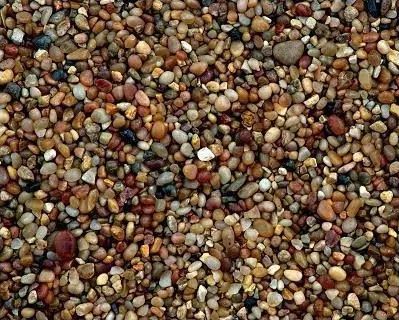
My recommendation is “natural” aquarium gravel, such as the picture above. The cream through brown varied color hides accumulated detritus and feces. Mono-colored substrate such white gravel simply look really bad when fish poop, which is something fish do ALL the time.
Small gravel, such as the 3-6 millimeter colored gravel sold in most aquarium stores, works reasonably well as an aquarium substrate. Anything over 6 millimeter (1/4ths inch) can start trapping food. Note that a mix of three to eight millimeter gravel such as most modern aquarium gravels is just fine as the small particles fill the voids in the larger particles.
Small gravel does increase the bioload somewhat (maybe very roughly + 5% to 10%) by trapping some food particles. But it doesn’t produce abrasive particles. Note that some cheaper aquarium gravels which are epoxy coated will flake off the epoxy coating in time, something which is very undesirable. White on black spotted gravel really looks bad.
Larger gravels such as pea gravel are simply bad for any aquarium. When fish are fed a small proportion of the food drops to the bottom of the aquarium. In most aquariums the food will simply lie exposed on the bottom where the fish can still get to it and eat it. With large gravel the fish can’t get to this uneaten food, it decomposes, and it creates an increased bio-load in the aquarium. I won’t use pea gravel or large decorative gravel. And don’t get me started on using marbles in the aquarium.
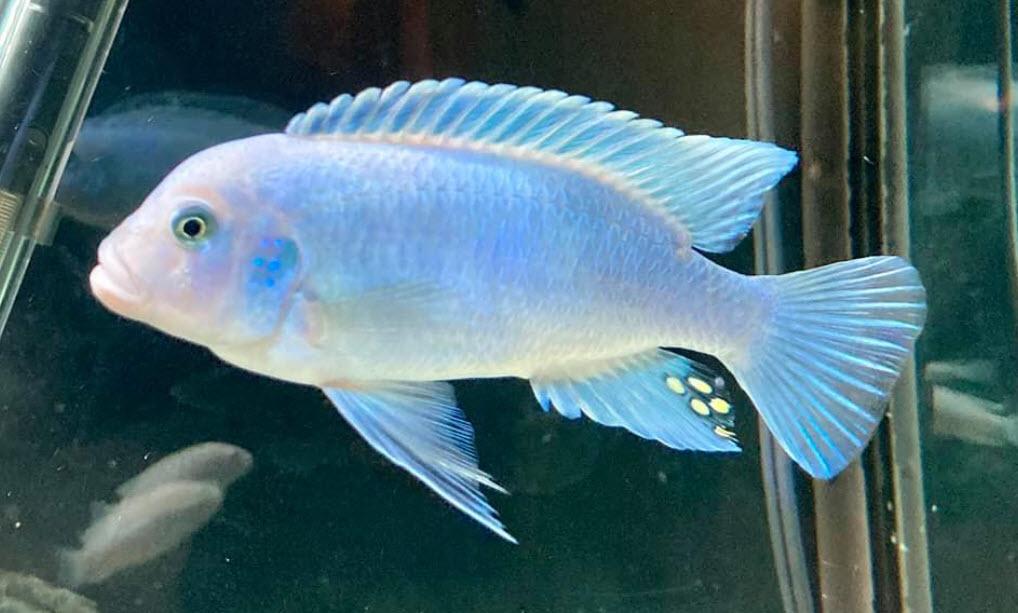
I never mix gravel which is very light or white with gravel that is dark. The resulting “salt and pepper” look is very unnatural. It looks like a lot of feces on the bottom of the aquarium. But then some like this aesthetic! I prefer small mixed brown gravel (light brown, medium brown and dark brown mixed together or just the “natural” aquarium gravel one can buy) and a natural look to the aquarium. Of course, some people and children prefer the psychedelic pink look to the gravel. To each his own.
Of course, 3 to 6 millimeter “aquarium gravel” is the best gravel for an undergravel filter and works well in an undergravel filter. I have had great success with undergravel filters and had them in all of my fish only aquariums.
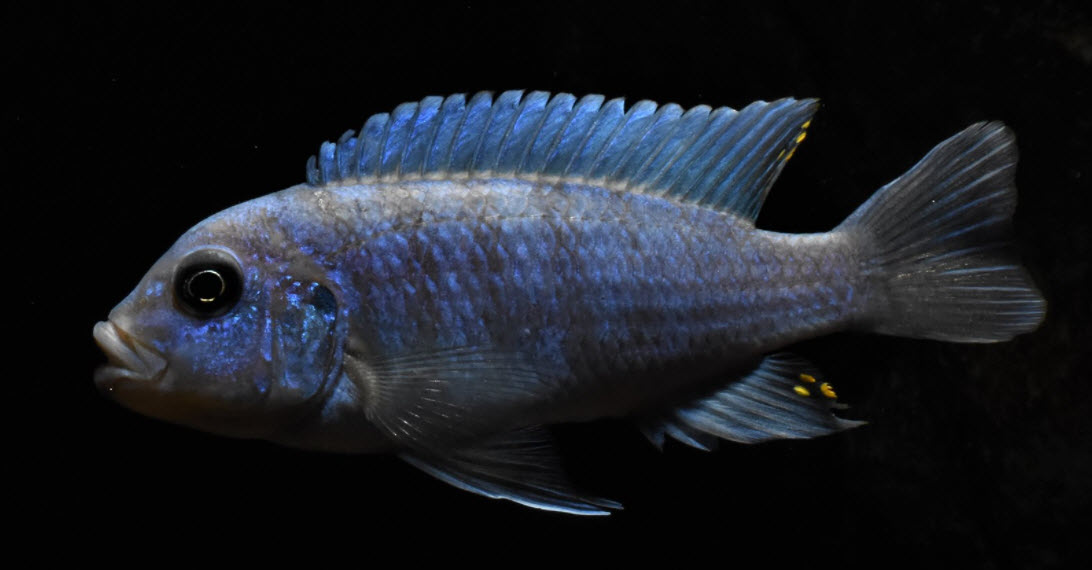
One very misunderstood topic is using a gravel vacuum. The brown mulm which forms down in the gravel is neither good or bad. It adds a little to the bioload of the aquarium water. But it also does some very limited biofiltration. And by “biofiltration” we mean both the action of “beneficial bacteria” (more properly termed “nitrifying bacteria”) and all the other beneficial organisms found in brown mulm. So the negatives and positives pretty much weigh each other out.
But a brown mulm above the gravel is a different matter. If bottom feeding fish like corydoras can swim through the mulm it is decidedly detrimental. One constantly sees “My corydoras lost their barbels. What happened?” on social media. When they post a photo the aquarium almost always has a brown mulm visible above the substrate. This mulm must be prevented. Prevention is best done by circulating the water in the aquarium in such a way as to sweep the mulm up into the filter.
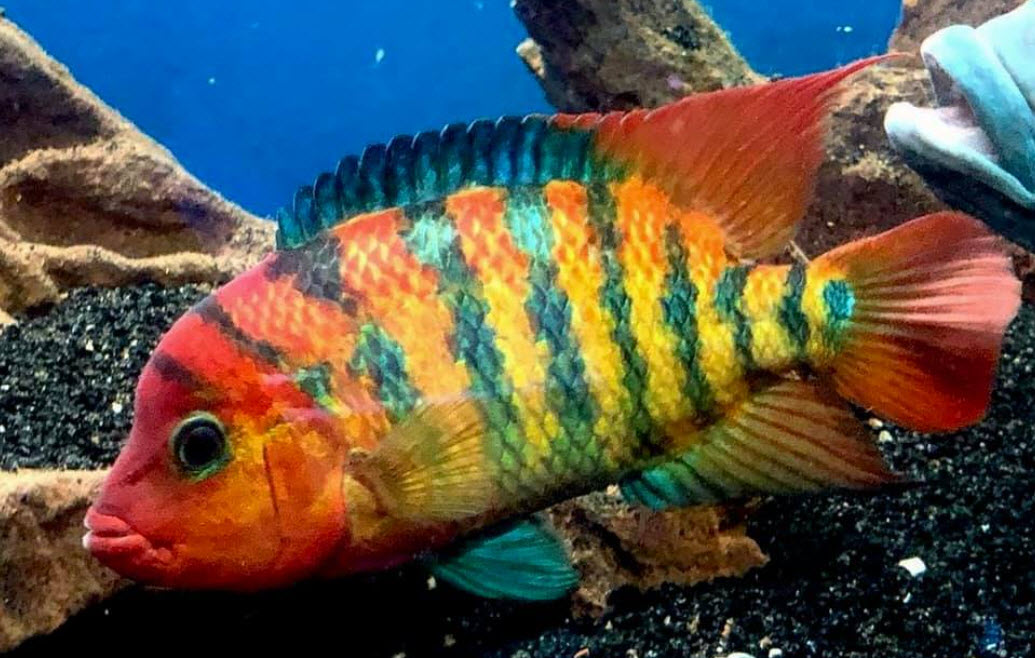
Oil Absorbent and Kitty litter
Aquarium gravel has gotten quite expensive. Two very real alternatives which are a WHOLE lot cheaper are the various sintered clay products used for Kitty Litter (typically light gray color) and clay oil absorbents (shades of rusty brown). These are CAN BE very attractive as a substrate, especially the rust colored clay oil absorbents.
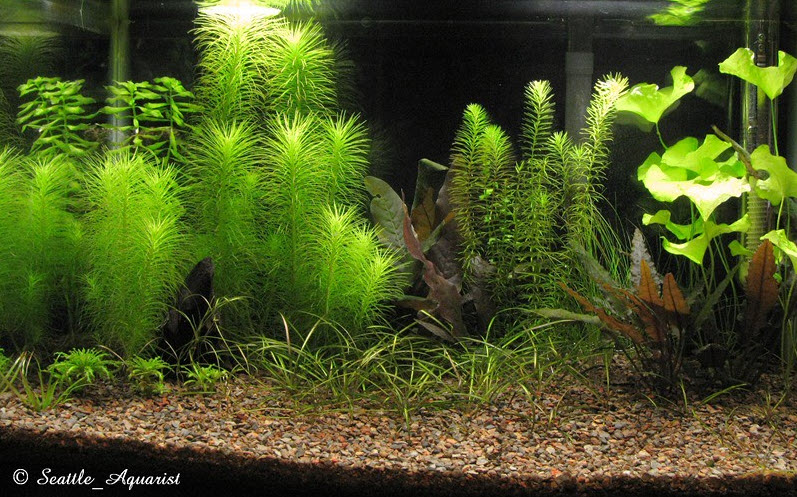
The oil absorbent and kitty litter have one big problem. They typically cannot be used in an undergravel filter as they have too much in the way of fines. I’ve had good luck with oil absorbent but some of my readers have had disasters. I think it all depends on the lot number of the absorbent. The amount of fines is not closely controlled and varies bag to bag, lot to lot, and manufacturer to manufacturer.
Return to Equipment Menu
.
Aquarium Science Website
The chapters shown below or on the right side in maroon lead to close to 400 articles on all aspects of keeping a freshwater aquarium. These articles have NO links to profit making sites and are thus unbiased in their recommendations, unlike all the for-profit sites you will find with Google. Bookmark and browse!
.

Dave says
Whew OK you want plants. That means you need to stay away from African cichlids and Central American cichlids (they up root plants). Other than that have at it.
Jonathan says
Hi Dave, great information on here for an old/newbie trying to get back into it. I have not had an aqaurium for many years, but now I have the time to put into it. I just got a 32 gallon bow front glass tank with stand. My starting point. I see gravel is your choice. What fish would help clean the mulm and other waste best, other than the one you listed.
Also what should my next step be after substrate/gravel/etc… i want plants and at least 15 fish or other aqautic life if that is feasible. Looking at bright colors, tangs, maybe an angel or 2 . Cichlids, etc…. any help or a point in the right direction is greatly appreciated!
Dave says
In reply to Connie …….. Bettas can be a short lived fish. Your gravel is doing nothing to the tank. Your tap water has excess carbon dioxide in it which is gassing off and raising the pH a little. But 8.2 is a fine pH for bettas. Take a long look at your feeding. Long term deaths with no clear cause often have over-feeding as the root cause.
Connie says
Hi Dave, just found your site. I have a 5 Gallon freshwater tank with a gravel substrate. My tap water is 7.4 Ph my tank is 8.2. I read that the gravel will raise my ph. In the past 4 years, I’ve lost 3 Bettas. I was in this hobby 25 years ago and had no problems with my fish. Got out of the hobby, because of moving. Decided to get a betta so I got a nano tank. Filter, heater. I’m lost why I’m losing these fish. I have a nerite snail left. I’m stumped. Thanks for any recommendations.
Dave says
In reply to Frank The silt will slowly work its way to underneath the UGF plates where it will be harmless. So just leave all in place and you should do just fine.
Frank T says
Hi Dave,
What a treasure this web compendium is. I have set up a 20g quarantine tank to establish strong bio filter media that can be used to seed the main display aquarium. Also want to plant this tank to possibly propagate some plants.
So, I used Seachem Fluroite Dark and Fluorite Black as substrate. Therein is my question.
I have an undergravel filter with bubblers in this 20 g tank along with a decent canister filled with pot scrubbers, K1 and 20 ppi foam (3 different due to the filter’s water path).
But I used Seachem Fluorite Dark and Fluorite Black. Their tech support said it was fine to use as a substrate with a UGF. But the brown fluorite dark is quite silty. Now I’m concerned and wondering if I should just remove the UGF now before the filtration has cycled.
Dave says
In reply to Kyle: Some key words from you “locally available litter and absorbents”. These are highly variable products. Sometimes they work and sometimes they don’t work. Based on the latest feedback I’m recommending going with expensive aquarium gravel for undergravel filters rather than trying to cheap it out with “locally available litter and absorbents”, sand or Black Diamond.
Kyle M says
Hi Dave.
I’m getting mixed signals. In reply to Noor you said kitty litter can be used with under-gravel filters.
But on the planted substrate discussion (15.7) you said:
“Calcined clay products such as Kitty Litter or Oil absorbents. Very inexpensive substrates that grow plants very well. Don’t work well in under-gravel filters.”
And:
“Note that calcined clay products have too many fines to work well with an under-gravel filter. This is true even if weed blocking screening or mosquito screening is used.”
Kind of puts me in a pickle. I’m running some tests on my locally available litter and absorbents to see if they break down in water, but the tank I want to use them in is going to have a UGF with powerheads. I have some unwoven weed blocking fabric I can use to cover the filter plates, but if the dusty clay particles are small enough to either get through or clog then obviously that’s a no-go. Any clarity on the topic?
Dave says
In reply to Brad … It should be just fine.
Brad says
Hi Dave I found a All-Purpose Granular Oil/Fluid Absorbent that contains a natural blend of diatomaceous earth and montmorillonite clay. I know the clay is okay, but the d.e.?
Dave says
IN reply to JLaw … Not really much of anything to it. Colored gravel is safe and always has been safe. Only the “return to loincloth” folks think otherwise with no data to back up their beliefs.
JLaw says
Hi Dave, Can you weigh in on the contentious “coloured gravel will leach chemicals into the water and should be avoided at all costs” debate? Perhaps this was an issue with epoxy-covered gravel in the past, but we’ve moved onto better methodology since then?
Dave says
If mush forms it wasn’t completely calcined and can’t be used for gravel.
Noor says
Hi Dave, thank you for your insights. Following up on the cat litter question, how well does it have to be rinsed? I bought a bag of unscented, non clumping cat litter, and when put in water, there is quite some amount of “mush” forming.
Dave says
In reply to Noor … A Matten undergravel filter with a half inch of kitty litter on top will work well for a Malawi Tank.
Noor says
Thank you Dave! The bottom of tank matten also sounds intriguing. In your opinion, for a Malawi aquarium do you think it would work well? As there would be no “traditional” substrate as such in the tank.
Would you suggest putting a thin layer of kitty litter on top of the sponges so I can put some artifical plants?
Dave says
In reply to Noor …… Yes it decidedly can be used in undergravel filters. Note there is considerable variability in the amount of fines found in different brands
Noor says
Hi Dave, can the Kitty litter be used for undergravel filters?